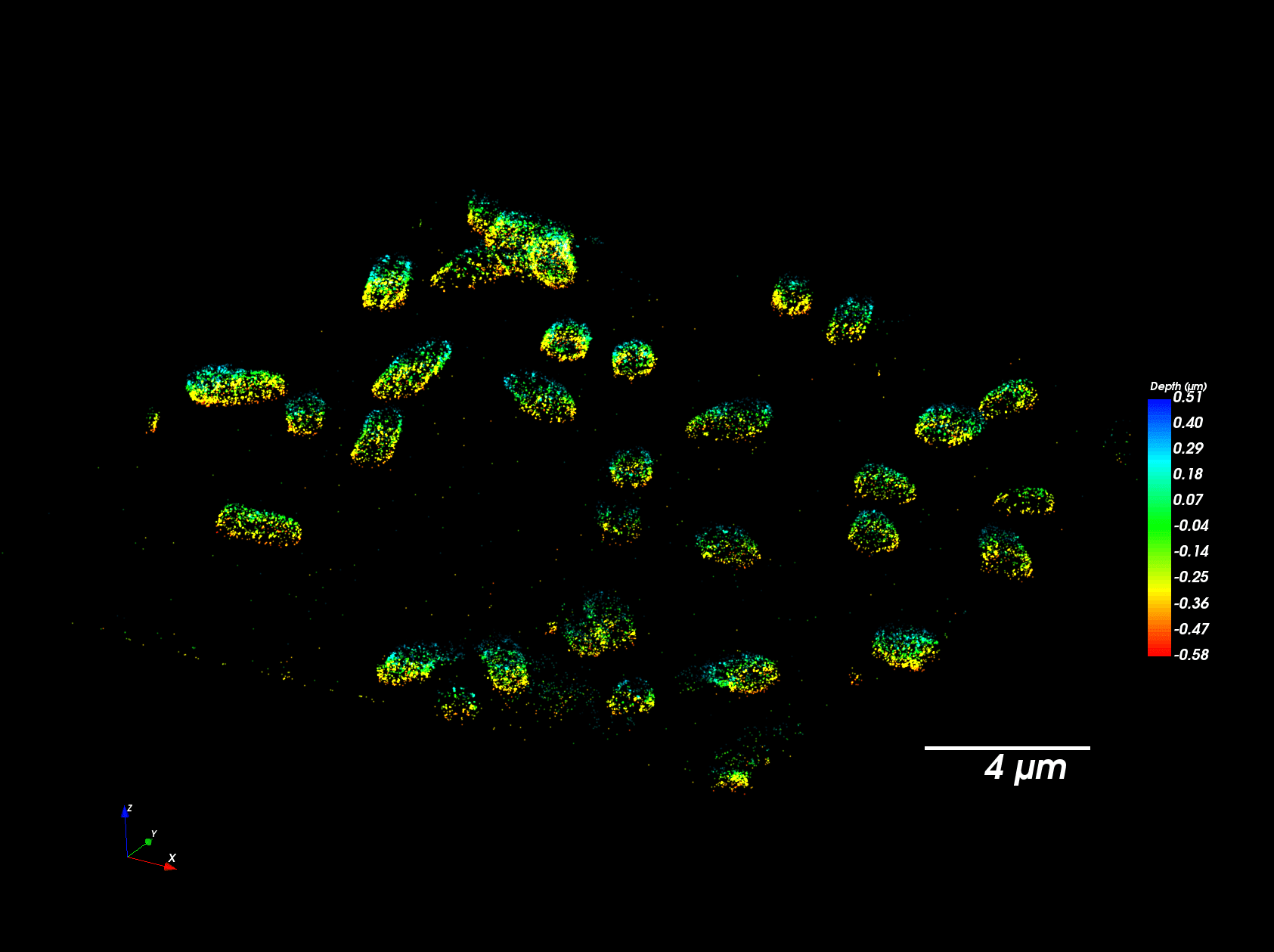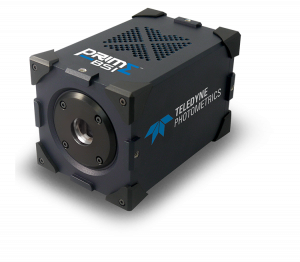Simultaneous Multichannel SMLM
Dr. Ian Dobbie, Dr. Jingyu Wang
Dynamic Optics and Photonics Group, University of Oxford
Background
Both Dr Ian Dobbie and Dr Jingyu Wang work with advanced optics and imaging systems at the University of Oxford. One of their projects aims to achieve the maximum possible 3D imaging resolution in multicolour single-molecule localisation microscopy (SMLM). This involves the use of a 4π-SMS microscope that projects 4 interference images onto the camera.
In order to visualise 2 or 3 dyes simultaneously, as well as collecting the light transmitted by the dichroic through the conventional fluorescence imaging path, this imaging system also collects the light reflected by the dichroic away from the fluorescence imaging path, the so-called 'salvaged fluorescence'. The ratio of the conventional to salvaged fluorescence intensity can be used to distinguish between two or three dyes with closely spaced emission wavelengths, allowing simultaneous multichannel 3D SMLM with a single excitation laser.
As the multichannel data is collected simultaneously on a single camera, drift between channels is non-existent, and chromatic aberration is minimised as the emission wavelengths are very close. This means that spatial relationships between the molecular locations are reliable down to and below the 3D resolution, of about 20 nm in all directions.

Figure 1: A reconstructed image showing localisations of multiple dyes, imaged simultaneously. This setup involved two sCMOS cameras (including the Prime BSI) to provide a ratio and form multicolor localisation images.
Challenge
Maximizing signal collection is vital with single-molecule applications. In this system, the illumination laser wavelength is blocked with several stacked emission filters. This salvaged fluorescence signal is also a small fraction of the conventional fluorescence signal so sensitivity and high signal to noise are critical in this application. Additionally, with large 3D volumes requiring a high number of image frames to localize a large number of single molecules, high frame rates are important while preserving the sensitivity and signal to noise.
We find that the Prime BSI is an excellent camera, and we have had excellent support from Photometrics assisting us in utilising this state of the art camera in a cutting edge super resolution optical microscope.
Dr. Ian Dobbie, Dr. Jingyu Wang
Solution
The high speeds, low read noise, and high quantum efficiency make the Prime BSI a great solution for this application. Dr Dobbie was pleased with the Prime BSI, "In this extremely challenging imaging application we find that the Prime BSI is an excellent camera. We have had excellent support from Photometrics assisting us in utilizing this state-of-the-art camera in a cutting-edge super-resolution optical microscope."

Learn More About The Prime BSI